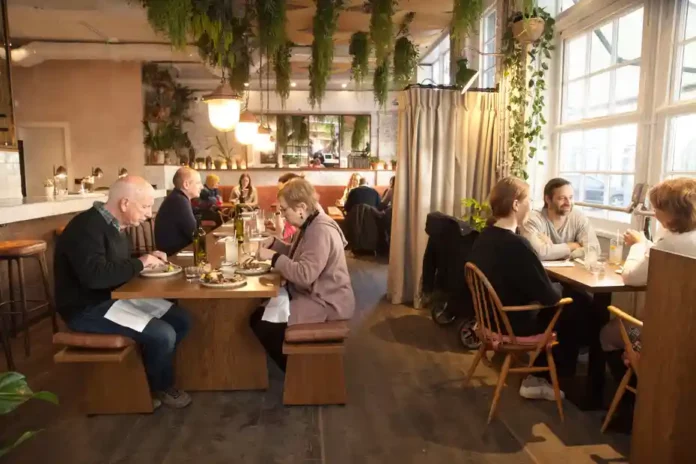
In the restaurant business, location isn’t everything. You need a compelling concept, great food and drink, a sound business model, and a first-rate team capable of executing your vision.
But it’s not as if location is merely the icing on the cake either. Your restaurant site has a direct impact on sales, even if the bulk of its business comes from reserved tables; a poor site discourages diners and can erode any competitive advantage you manage to build through quality food and service.
So, what should you look for in a restaurant location? These are among the most important factors to consider.
1. Area Median Income
Your restaurant can’t survive without paying customers. Why not give it every opportunity to reach those customers close to where they live and work?
The higher the median income in the area around your restaurant site, the more plentiful those opportunities become. It’s a tried-and-true rule of restaurant site selection — practiced by comparatively ancient franchisors like McDonald’s along with up-and-coming enterprises like Vandelay Hospitality Group.
The U.S. Census Bureau is your best source for area median income data at the ZIP code level. To get a comprehensive picture of income in your restaurant’s trade area, you’ll want to look at all the ZIP codes within a 5- to 10-mile radius of your location — which could be quite a few in a densely populated area.
2. Area Median Age
Don’t worry about knowing your 100 best customers’ ages down to the month — though you should know their birthdays and kick them a freebie every year.
Your concern here is with archetypes. Are you planning to open on the main drag of a college town, just off campus? In a shopping center surrounded by 55+ communities? In a family-friendly suburb?
Knowing a given site’s age demographics helps you judge the vibe of a place and understand what’s likely to succeed there.
3. Daytime Population Within 5 Miles
This is more important if you plan to do a significant amount of business at lunch. But people grab apps, dinner, and drinks after work too. You need to know the size of your captive audience before making a bet on a particular place.
4. Vehicle Traffic (Cars Per Hour) During Rush Periods
Vehicle traffic is a proxy for visibility and convenience. The more potential customers you have driving by your site every hour, the more opportunities you have to convert them — whether via spontaneous walk-ins or visits planned because your place is convenient.
That said, traffic timing and intent are important as well. It does you no good if traffic past your site is mostly commuting and you’re a lunch-only place.
5. Proximity to Other Units
If you already operate other units, make sure you’re not cannibalizing your own business. Choose a site that’s far enough from your nearest existing unit to serve a large group of distinct prospects — we’re talking in the tens of thousands.
6. Proximity to Competitors
You shouldn’t open too close to your competitors. Or should you?
It might not be a bad idea. In busy areas, restaurants often benefit from network effects — the so-called “restaurant row” phenomenon, where prospects visit the area because they know it offers so much choice. You’ll get more walk-ins in a restaurant-dense location and could have less trouble raising your profile in the local scene.
7. Parking and Accessibility
Finally, consider how easy it is for prospects to find and access your site. This requires a hard look at the nuts and bolts of each potential site. You’ll need to ask questions like:
- How visible is the location — is it on an endcap or corner, or tucked into a mid-block storefront?
- What’s ingress and egress like for vehicles?
- Does it have enough parking in its own lot or in a nearby public lot?
- Is it on a one-way or divided-way road, or can traffic easily access it from both directions?
- Is there a controlled left turn into and out of the parking lot?
- Does it have a drive-thru or space for one?
- Does the immediate area get a lot of foot traffic?
It’s Your Future. Choose Wisely.
Your restaurant will never be totally set in its ways. With few exceptions, great dining establishments evolve over time. Some outright reinvent themselves. And if the day should ever come that you seek a truly clean break with your restaurant’s past, you can always bid the original concept adieu and reopen with an entirely fresh brand.
But some things about your restaurant are more difficult to change than others. Unless you operate a mobile eatery, your restaurant’s location is right at the top of this list.
Sure, you can move to a new space — and might find that necessary if your restaurant grows like it ought to — but that’s not a decision to take lightly. Nor is it a decision that many restaurateurs can afford to take, especially not in those tenuous first few years of existence.
Bottom line: This is the sort of choice you want to get right the first time around. In this business, do-overs are never guaranteed.











